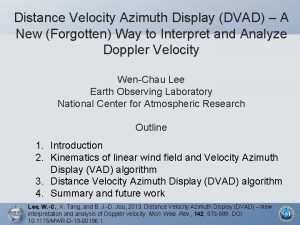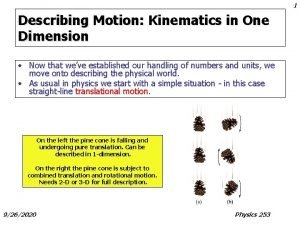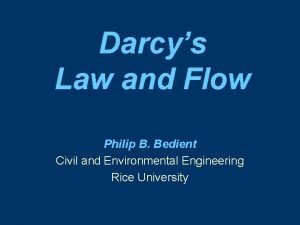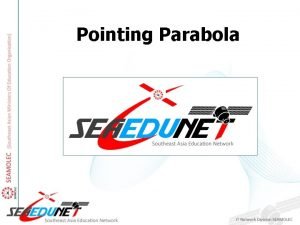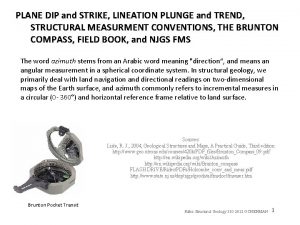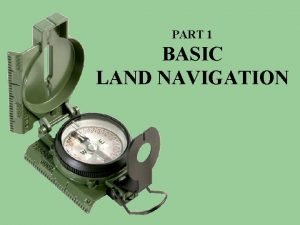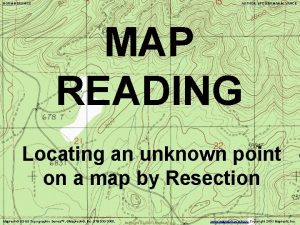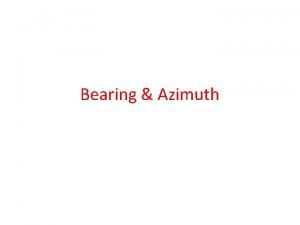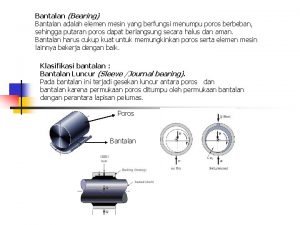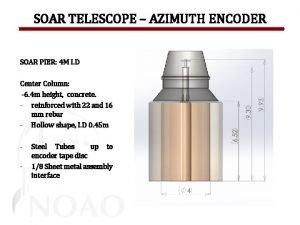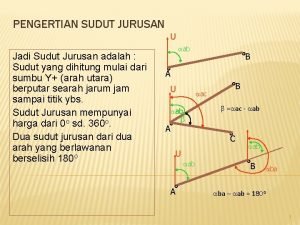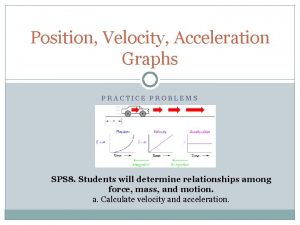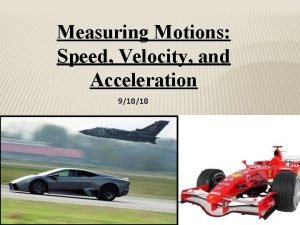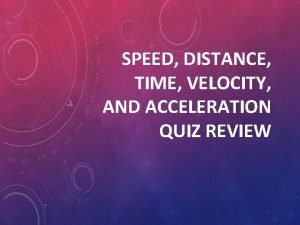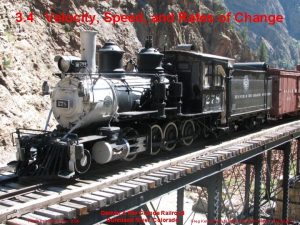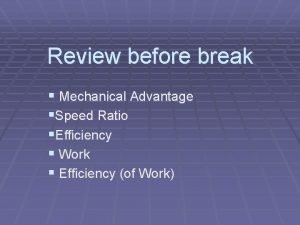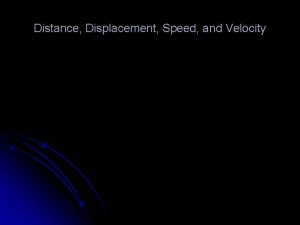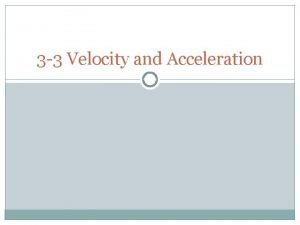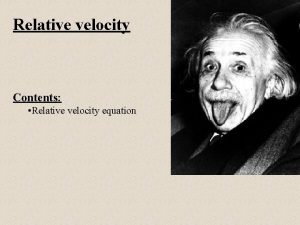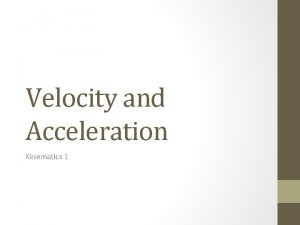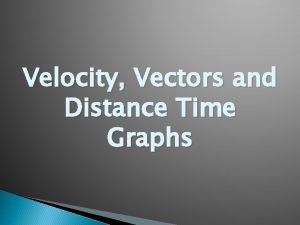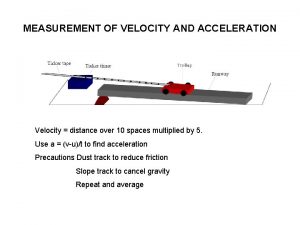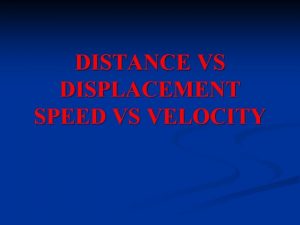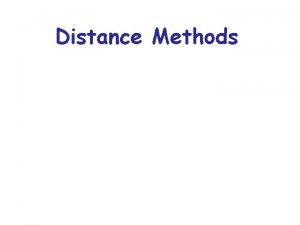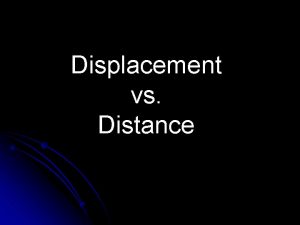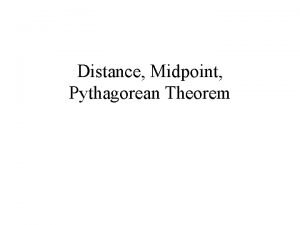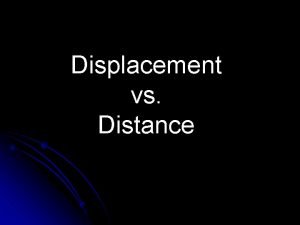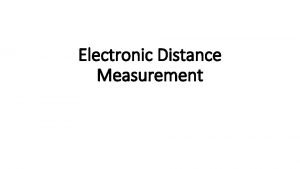Distance Velocity Azimuth Display DVAD A New Forgotten








































- Slides: 40

Distance Velocity Azimuth Display (DVAD) – A New (Forgotten) Way to Interpret and Analyze Doppler Velocity Wen-Chau Lee Earth Observing Laboratory National Center for Atmospheric Research Outline 1. Introduction 2. Kinematics of linear wind field and Velocity Azimuth Display (VAD) algorithm 3. Distance Velocity Azimuth Display (DVAD) algorithm 4. Summary and future work Lee, W. -C. , X. Tang, and B. J. -D. Jou, 2013: Distance Velocity Azimuth Display (DVAD) – New interpretation and analysis of Doppler velocity. Mon. Wea. Rev. , 142, 573 -589. DOI: 10. 1175/MWR-D-13 -00196. 1.

Radar Principles Armijo (1969) • Radio wave energy is transmitted. . . • . . . and scattered back

Characteristics of Vd and r. Vd/RT Analytic Vd r. Vd/RT Jou, B. J. -D. , W. -C. Lee, S. -P. Liu, and Y. -C. Kao, 2008: Generalized VTD (GVTD) retrieval of atmospheric vortex kinematic structure. Part I: Formulation and error analysis. Mon. Wea. Rev. , 136, 995 -1012.

Previous Work • Peace et al. (1969) first used r. Vd, expanded r. Vd in polynomial form, and deduced pseudo-dual-Doppler winds. • Gal-Chen (1982) recognized that the second derivative of r. Vd with respect to time is invariant and can be used to determine the optimal advection speed of an atmospheric phenomenon.

Identify the Kinematic Properties Represented by These Single Doppler Velocity Patterns Const. Wind Divergence + Mean Wind • One of the main challenges has been to extract KEY kinematic properties of a wind field from a given single Doppler radar observation. • Many single Doppler wind retrieval algorithms have been developed based on simplified wind Divergence Shearing fields. Deformation • The Velocity Azimuth Display (VAD, Browning and Wexler 1968) has been used to deduce kinematic properties in research and operation.

A Taylor expansion is an infinite series of terms that use first, second, and higher order derivatives to determine a periodic function. For simplicity, lets assume that x 0, y 0 is the origin (0, 0) and that we can obtain an adequate estimate of u and v by retaining only the first derivatives. We are assuming that over the small distance the u and v field vary linearly. Then…

Let’s take a simple step and write each derivative term as (for example) : Translation Divergence Relative Vorticity (δ) (ζ) Stretching Deformation (D 1) Shearing Deformation (D 2)

Translation y The effect of translation on a fluid element: x Change in location, no change in area, orientation, shape

Divergence (δ > 0) Convergence (δ < 0) y The effect of convergence on a fluid element: x Change in area, no change in orientation, shape, location

Positive (cyclonic) vorticity ( > 0). Negative (anticyclonic) vorticity ( < 0) y The effect of negative vorticity on a fluid element: x Change in orientation, no change in area, shape, location

y E-W Stretching Deformation (D 1 > 0). N-S Stretching Deformation (D 1 < 0). The effect of stretching deformation on a fluid element: x Change in shape, no change in area, orientation, location Axis of dilitation Axis of contraction

y SW-NE Shearing Deformation (D 1 > 0). NW-SE Shearing Deformation (D 1 < 0). The effect of shearing deformation on a fluid element: x Change in shape, no change in area, orientation, location

VELOCITY-AZIMUTH DISPLAY (VAD) PROCESSING OF RADIAL VELOCITY DATA FROM A DOPPLER RADAR A technique for the measurement of kinematic properties of a wind field in widespread echo coverage using a single Doppler radar

Equation for radial velocity in terms of wind components: We will assume that the velocity gradient across a ring varies linearly so that:

Write previous equation as a Fourier series where and the coefficients are:

Contains information about Divergence and total fall velocity of the particles Contains information about the horizontal wind speed and direction Contains information about the flow deformation and its orientation

Data taken along a ring in a VAD scan at range 5922 m and altitude 2582 m at elevation angle 17. 7° in a winter storm Data points are radial velocities Radial velocity Derived Fourier Spectral Components Line is best fit line Azimuth angle

Operational VAD calculation of winds from NEXRAD in Hurricane Jeanne (2004) From Jacksonville, FL radar VAD winds available from College of Du. Page, IL http: //weather. cod. edu/analysis. radar. html

Details in Performing VAD and EVAD Analysis • • Accuracy of the flow model (linear vs nonlinear) Dealiasing Uneven data distribution – Orthogonal basic functions (? ) Choice of weighting functions – even sampling biases in range • Data gaps – no more than 30 -45 degrees Matejka and Srivastava (1991): An improved version of the Extended Velocity-Azimuth Display analysis of single-Doppler radar data. J. Atmos. Oceanic Technol. , 8, 453 -466.

Distance Velocity Azimuth Display (DVAD) - A New Paradigm Spherical Coordinate Cartesian Coordinate r. Vd behaves like velocity potential

Taylor Series Expansion of u, v, and W to Second Order Derivatives at the Radar • Substitute above equations into r. Vd=ux+vy+wz and illustrate in two dimensions for linear wind field

Linear Wind r. Vd is a quadratic equation with coefficients the same as those obtained in VAD: The discriminant: D=(uy+vx)2 -4 uxvy D<0 : Circle or Ellipse D=0 : Parabola D>0 : Hyperbola Stretching Deformation Sheering Deformation

Properties of Quadratic Equation Divergence is invariant Deformation is coordinate dependent

Constant Wind u(x, y)=C 1, v(x, y)=C 2, and V=C 1 i + C 2 j r. Vd forms a set of parallel lines

Linear Wind Divergence ~10 -4 s-1 Deformation ~10 -4 s-1

Divergence + Deformation

Divergence + Mean Wind Deformation + Mean Wind

Divergence + Deformation + Mean Wind

2 nd Order Non-linear Wind This is a cubic equation. VAD coefficients for nonlinear wind fields does not have physical meaning.

Divergence + Deformation + Mean Wind + Non-linear uxx ~10 -7 m-1 s-1 uxx ~10 -6 m-1 s-1

Computation • Two-dimensional polynomial curve fit üUse F-test to determine the highest order term (i. e. , not limited to linear assumption) • Successive differentiation üNoise can be a problem üSmoothing may be required


Two Solutions in DVAD

Pseudo Wind

A Real Case

VAD Analysis of Nonlinear Wind Fields Physical Flow Model Cubic Flow Model Mathematic Flow Model Caya and Zawadzki (1992): VAD analysis of nonlinear wind fields. J. Atmos. Oceanic Technol. , 9, 575587.

VAD Coefficients Have No Physical Meaning for Non-linear Wind Fields Using range dependence relationship of these coefficients, mean wind, divergence and deformation can be deduced at the origin.

DVAD on Non-linear Winds Use F-test to determine the highest order term required to fit because of the non-orthogonal base functions. One step process. Tang, X. , W. -C. Lee, and Y. Wang, 2015: Nonlinear wind analysis of single Doppler radar in DVAD framework. J. Appl. Meteor. Climatology, 54, 1538 -1555, DOI: 10. 1175/JAMC-D-14 -

Summary • The characteristics of a “forgotten” r. Vd and its applications to single Doppler analysis are presented. • The wind patterns are easier to identify and interpret graphically. • r. Vd pattern is conserved when mean wind exits. • r. Vd can be analyzed in Cartesian coordinate and physical quantities are easier to deduce compared with the VAD algorithm, especially in non-linear wind field. • The full capability of r. Vd needs to be further explored (e. g. , vertical wind profiles, unfolding, data assimilation, etc. )

Thank You
 Dvad
Dvad Kahoot pin
Kahoot pin In raster scan display, the frame buffer holds
In raster scan display, the frame buffer holds Raster scan display and vector scan display
Raster scan display and vector scan display Darcy's law
Darcy's law Angular acceleration formula
Angular acceleration formula Initial velocity and final velocity formula
Initial velocity and final velocity formula Final velocity initial velocity acceleration time
Final velocity initial velocity acceleration time Deceleration formula
Deceleration formula Instantaneous velocity vs average velocity
Instantaneous velocity vs average velocity Darcy s law
Darcy s law Rotational motion and the law of gravity
Rotational motion and the law of gravity Tangential speed
Tangential speed Azimut parabola
Azimut parabola Strike dip plunge trend
Strike dip plunge trend Land nav basics
Land nav basics Back azimuth
Back azimuth Bearing in surveying
Bearing in surveying Convert azimuth to bearing
Convert azimuth to bearing Bearing to azimuth
Bearing to azimuth Bantalan adalah
Bantalan adalah Soar telescope
Soar telescope Apa yang dimaksud sudut
Apa yang dimaksud sudut Position velocity acceleration
Position velocity acceleration Speed, velocity and acceleration formula
Speed, velocity and acceleration formula Lag distance formula
Lag distance formula Distance rate and time brainpop answers
Distance rate and time brainpop answers Acceleration quiz
Acceleration quiz Is distance the derivative of velocity
Is distance the derivative of velocity Time distance/speed formula
Time distance/speed formula The ratio of input distance to output distance
The ratio of input distance to output distance How is distance different from displacement
How is distance different from displacement The forgotten footnote example
The forgotten footnote example Plagiarism in media and information literacy
Plagiarism in media and information literacy Listening the forgotten skill
Listening the forgotten skill First impressions examples
First impressions examples Siachen the forgotten war
Siachen the forgotten war Yanggongju
Yanggongju Education is what remains after one has forgotten meaning
Education is what remains after one has forgotten meaning Youtube darryl worley have you forgotten
Youtube darryl worley have you forgotten Not forgotten carry
Not forgotten carry
